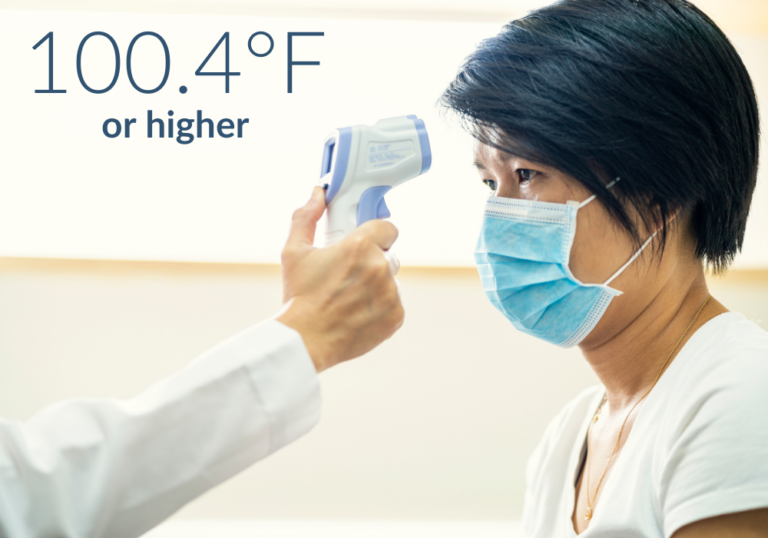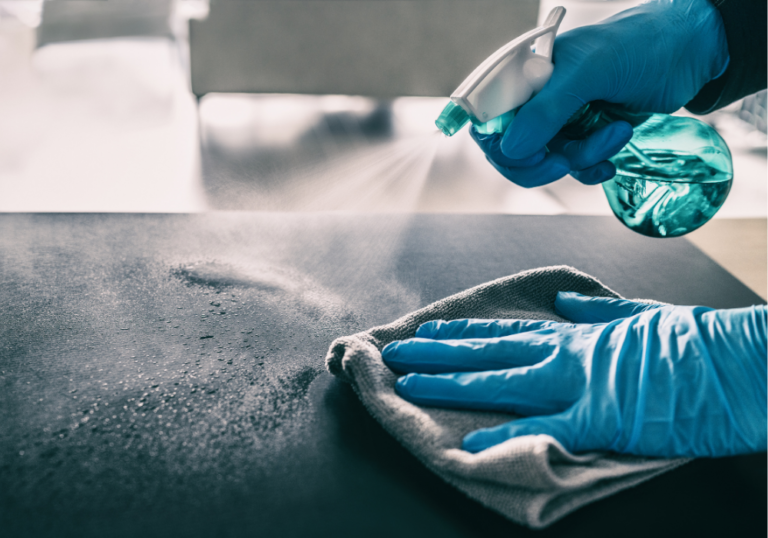What to Do With a Positive COVID – 19 Test In Your Practice
Posted by amess on Oct 15th 2020
During this new normal, almost all public places have adopted a new daily routine that includes more cleaning, better sanitization, and masks. While there are many safety measures in place, it’s still possible for a positive COVID-19 case within your practice. So, what should you do if your staff member tests positive? The Center for Disease Control and Prevention created a list of guidelines to help business owners like you know what your next steps are, and the Review of Optometric Business (ROB) shared their suggestions.
Step 1: Tell Staff to Stay Home
This may sound obvious, but it’s important to mention. Encourage employees to stay home if they’re feeling ill, and if they’re showing symptoms congruent with coronavirus, have them notify their supervisor immediately and follow the CDC guidelines of quarantining for 14 days. Symptoms include:
- Shortness of breath
- Headache

Fever – feeling feverish (chills, cold sweats, face is hot, etc.) or temperature of 100.4°F or higher
- May not be consistent and may not present in some people (elderly, immunocompromised, or those taking certain fever-reducing medications)
- Cough
- Fatigue
- Muscle or body aches
- Loss of taste or smell
- Sore throat
- Congestion or runny nose
- Nausea or vomiting
- Diarrhea
There are also emergency warning signs for COVID-19. The employee should seek emergency medical care immediately if they’re experiencing:
- Trouble breathing
- Persistent pain or pressure in the chest
- New confusion
- Inability to wake or stay awake
- Bluish lips or face
If an employee has been exposed to an ill person, they should quarantine immediately and follow the guidelines.
What If an Employee Might Have COVID-19 When They Arrive?
If an employee arrives at work and appears to be ill, you should separate them immediately from other staff, patients, visitors, etc. The ill person should return home as soon as possible, and it’s best to have a transportation plan in place in case the infected employee is unable to drive or needs medical attention.
What If an Employee Tests Positive for COVID-19 After They’ve Been In the Office?
Just because an employee tests positive after they’ve been in the office doesn’t mean you need to close your doors and have a HAZMAT team come in. However, there are some important steps you’ll need to take.

Employee Has Been In Within the Last 7 Days
If that employee has been in the office within the last 7 days before notification, you should immediately close the areas they used for prolonged periods of time (i.e. 15+ minutes). Wait 24 hours, then deep clean and sanitize the areas. It’s recommended to wait a full day before cleaning to minimize the risk of infection from those surface areas. If waiting a full day is not feasible, wait as long as possible before cleaning.
During the wait, it’s helpful to increase air circulation. Try opening as many doors and windows as possible and utilize fans where applicable.
Additionally, you should notify everyone who has been exposed to the infected employee. Generally, “exposure” means within 6 feet for 15+ minutes – regardless of wearing a mask. However, the severity of the encounter can change the determination (i.e. coughing in the face, kissing, exercising in close proximity, etc.). While a notification should take place, maintaining discretion for the infected employee is essential. Advise the employee to take additional precautions during the next 14 days, including self-quarantining for 14 days.
Employee Has Not Been In Within the Last 7 Days
If the ill employee has not been in the practice within the week before notification, any additional cleaning is not necessary, but it also couldn’t hurt. It’s recommended to clean and disinfect areas per your new COVID cleansing policies.
Notification should still be made in this case to anyone who has had exposure to the ill employee. Follow the same protocol as above. Here’s an extensive list of the recommendation from the CDC: https://www.cdc.gov/coronavirus/2019-ncov/php/public-health-recommendations.html
What If an Employee Was Exposed to a COVID-19 Positive Person But Is Asymptomatic?
Many employers feel guilty for sending their employees home if they have no symptoms. We understand this inclination, and here are the steps you should take if this is the way you’re feeling.
- Pre-screen the employee before they enter the practice. Take their temperature and assess their symptoms (if any).
- Continue to monitor the employee’s status. Have them self-monitor throughout the day per the patient’s occupational health program.
- Mandate that the potentially infected employee wears a mask. While everyone should be wearing a mask, the employee(s) who may be infected should not remove their mask the entirety of their shift/workday.
- Do your best to maintain a safe social distance (6+ feet) between the potentially infected employee and other employees, patients, visitors, etc. While this may not always be possible, it should be taken into careful consideration when the situation arises.
- Maintain a sanitized work environment. Upkeep your new COVID-19 sanitation protocols and ensure the potentially infected employee is following these guidelines with extra precaution.
While this virus is complicated, the steps to reducing the risk of transmission boil down to 4 simple things:
- Employees should stay home if they may be sick.
- Increased cleaning and sanitation processes should be in place.
- Wear masks and maintain social distancing within the office.
- Utilize increased ventilation (open doors and windows and turn on fans) and fresh air when possible.
The ROB article finishes with this idea: “The overarching important concept is to maintain healthy business operations.”
For Additional Safety, Consider Auto Refill
Did you know EyePromise offers an Auto Refill Program? This convenient program enables your practice to continue recommending EyePromise vitamins without the increased risk of having patients return in-person to get their vitamins.

